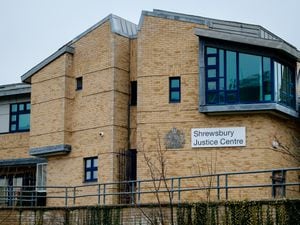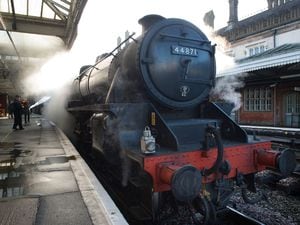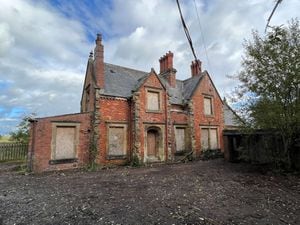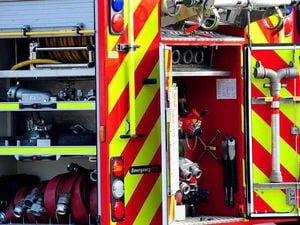Family pride as Shropshire Navy seaman and father play part in Prince Philip's funeral
A young Shropshire seaman watched on with pride as his father played a vital role at Prince Philip's funeral.
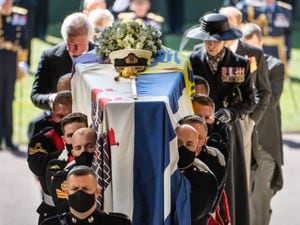
Able Seaman Sam Tait, 17, from Telford, was the youngest member of the military involved in the procession, and stood to attention outside St George's Chapel in Windsor Castle as the Royal Family walked behind the Duke of Edinburgh's coffin.
Sam's father, Royal Marines drill instructor Colour Sergeant Graham Tait, who is also from Shropshire, was one of the pall bearers.
Sam's mother Andrea watched on proudly from home and said: "It's massive for all the family. Sam phoned me afterwards and said he was in awe of what's just happened.
"He said it was the most amazing feeling to be part of it. He said he has volunteered to do the Remembrance Parade in November. It was very moving. I thought it was really fitting and appropriate."

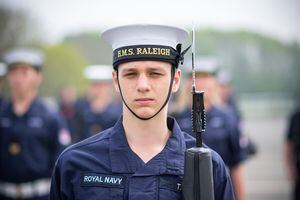
There is a long military history in the family. Sam, who is an aircraft engineer technician based at HMS Heron in Yeovil, Somerset, is doing the same job at the same location as his late great-grandfather Peter Moth did many years ago, and was so keen to join the forces he signed up at the Shrewsbury recruitment centre in the Square on the first day he could, aged 15 and nine months.
Also taking part as a pall bearer was Guardsman Sam Tudor, of Wellington, who is a Guardsman in the 1st Battalion Grenadier Guards.
Meanwhile another Telfordian, Garrison Sergeant Major Andrew ‘Vern’ Stokes, was responsible for organising the ceremonial military parade.
The Duke of Edinburgh's life and legacy were remembered during a funeral service reflecting his naval career, passion for engineering and dedication to the Queen.
During the poignant event attended by the Queen and his children and grandchildren, the duke was described as enriching the lives of all those he knew with his "kindness, humour and humanity".
The day was one of contrasts, a spectacle of pomp and pageantry provided by the many regiments and military units associated with Philip during his long association with the Armed Forces who took part.
In bright brilliant sunshine the funeral procession made its way through the precincts of the castle.
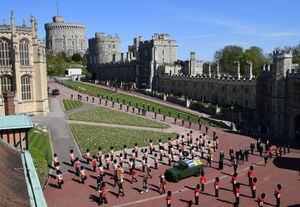
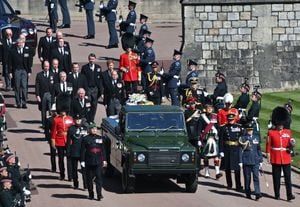
Philip's children - Prince of Wales, Princess Royal, Duke of York and Earl of Wessex - walked behind his coffin carried by a Land Rover Defender hearse the Queen's consort helped design.
They were joined by the duke's grandsons the Duke of Sussex, Duke of Cambridge and Peter Phillips and Vice Admiral Tim Lawrence, the Princess Royal's husband, and the Queen's nephew the Earl of Snowdon.
More coverage:
The royals walked in step as a military band played and all stared straight ahead into the sun as they made their way to the duke's final resting place past Able Seaman Sam Tait and members of all branches of the military.
Cutting a solitary figure at the front of the quire, nearest the altar, the Queen sat apart from her children during the service in St George's Chapel, while William and Harry were seated opposite one another.
The Duke's love of the sea and long association with the Royal Navy permeated the service reduced choir of four singing the hymn "Eternal Father, Strong to Save" - traditionally associated with seafarers and the maritime armed services.
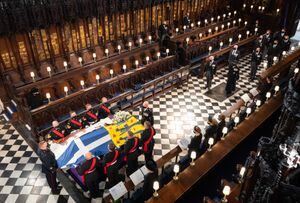
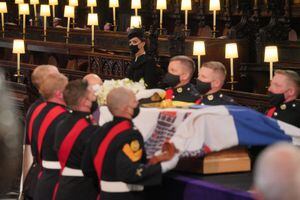
The duke's coffin was also slowly lowered into the royal vault as his titles were read out.
It was draped with his personal standard and alongside the wreath was his Admiral of the Fleet Naval cap and sword.
A mournful lament was played by a Pipe Major from the Royal Regiment of Scotland, and as he walked away from the chapel the music faded until he finally stopped.
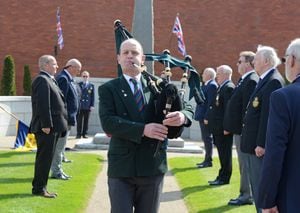
In the nearby nave the Last Post was sounded by buglers from the Royal Marines and a few moments later the Reveille was played by the State Trumpeters of the Household Cavalry.
Philip served as Captain General of the Royal Marines for more than six decades and at the end of the service the buglers sounded 'Action Stations'.
The short piece was a fitting finale and is played on a warship to signal all hands should go to battle stations and is sometimes featured at funerals of naval men.
The national anthem was sung by the reduced choir as the service came to an end and as the royal family followed the Queen out of the chapel Harry glanced down at the opening to the royal vault.

